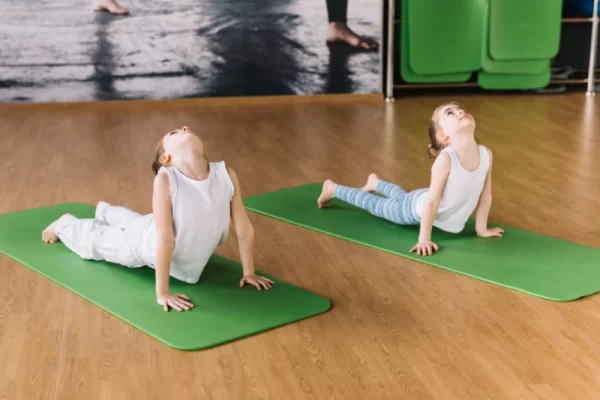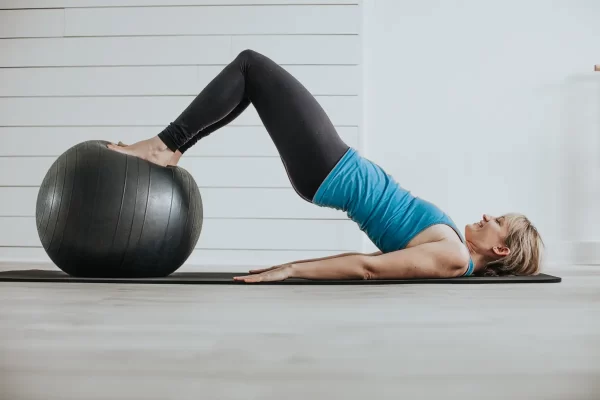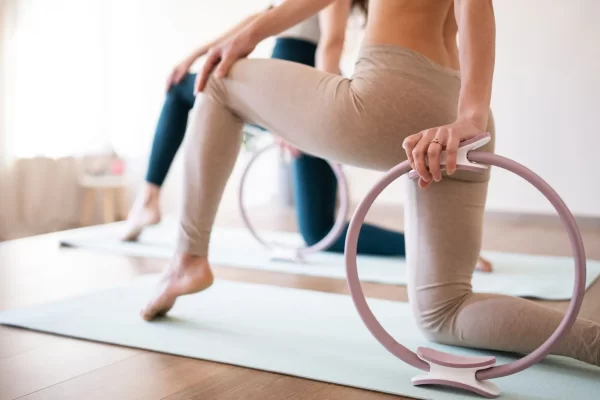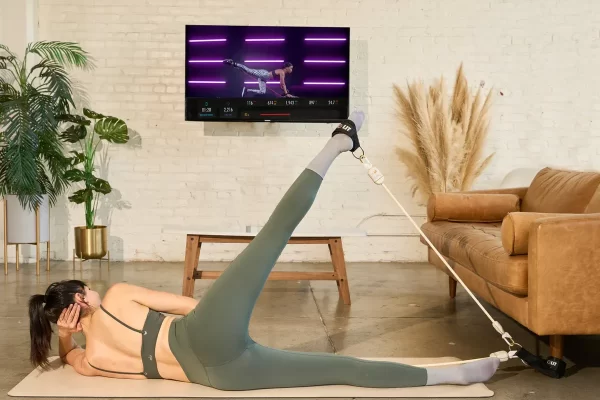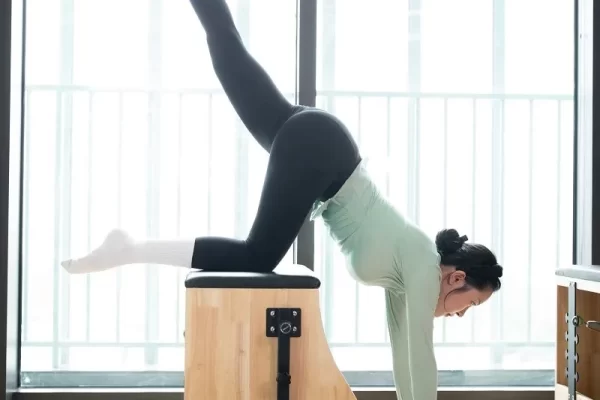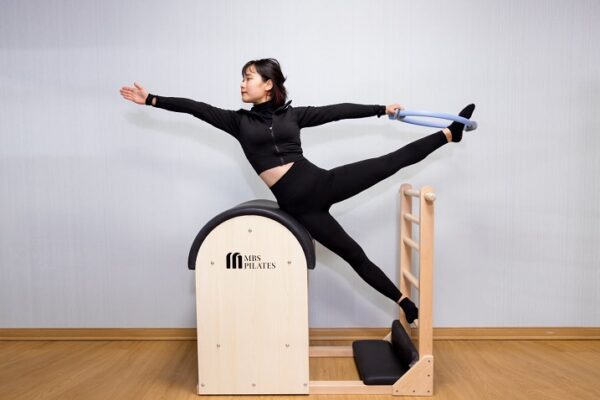What Is a Foam Roller? How to Use a Foam Roller in Pilates for Best Results
25/11/2025In the world of fitness, the foam roller has become an essential tool for enhancing performance and improving the overall exercise experience. When combined with Pilates, this cylinder shaped accessory brings impressive benefits from easing muscle tightness to boosting flexibility and balance. So, what exactly is a foam roller, and how can you use it effectively during Pilates sessions? Let’s explore in this article.
What Is a Foam Roller?
A foam roller, also known as a massage roller, is a cylindrical tool with either a smooth or textured surface designed for muscle release after workouts. It is commonly made from EVA (Ethylene vinyl acetate) material.

Foam roller, also known as a massage roller.
For those who exercise regularly, this tool supports muscle relaxation, improves blood circulation, and reduces soreness caused by tight muscles. Foam rollers typically range from 30-60 cm in length and 10-15 cm in diameter.
Users can apply self massage to various muscle groups such as the calves, quadriceps, glutes, back, and hamstrings. It is especially beneficial for individuals practicing Gym, Pilates, Yoga, or cycling. Using a foam roller helps muscles recover faster and receive essential nutrients for optimal development.
The Origin of the Foam Roller
Foam rollers were first used in the 1980s in the Feldenkrais Method to improve posture, reduce pain, and enhance mobility. In 1987, physical therapist Sean Gallagher introduced self massage techniques using a foam roller. Later, renowned dancer Jerome Robbins adopted this method, helping it spread within dance communities. By 2007, foam rollers had become widely used across the fitness industry.
Today, foam rollers are widely available at affordable prices and are a favorite tool for Yoga and Pilates practitioners training at home.
Types of Foam Rollers
Foam rollers come in various sizes and surface textures to meet different training goals. Coaches often note that their color indicates firmness: white is softest, blue is medium, and black is the firmest.
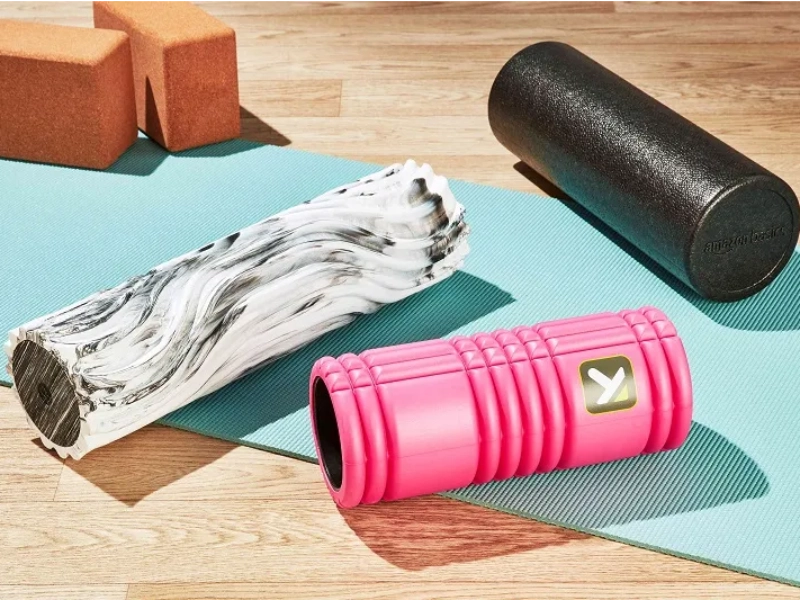
Types of Foam Rollers.
The three most common types include:
- Soft Rollers: These offer comfort with a smooth surface, ideal for beginners or individuals with sensitive muscles. Despite their softness, they maintain shape effectively.
- Standard Rollers: The most popular option, featuring medium firmness. They provide effective therapeutic massage without causing discomfort.
- Firm Rollers: Best suited for athletes with highintensity activity who need deeper muscle release for quicker recovery. This type is widely used among gym trainees.
Benefits of Using a Foam Roller
Using Foam Roller brings many important benefits to the practitioner:
1. Enhances Blood Circulation
Foam rolling stretches and loosens tight muscles, helping fresh, oxygen rich blood replace stagnant blood. This accelerates muscle recovery after exercise.
2. Reduces Injury Risk
Releasing tension with a foam roller improves muscle elasticity and joint mobility, reducing the likelihood of injury. Research shows using a roller before and after training helps prevent muscle strain.
3. Shortens Post Injury Recovery Time
Foam rolling promotes circulation, flushes out lactic acid, and supplies nutrients to the muscles more quickly—speeding up recovery after strains or soreness.
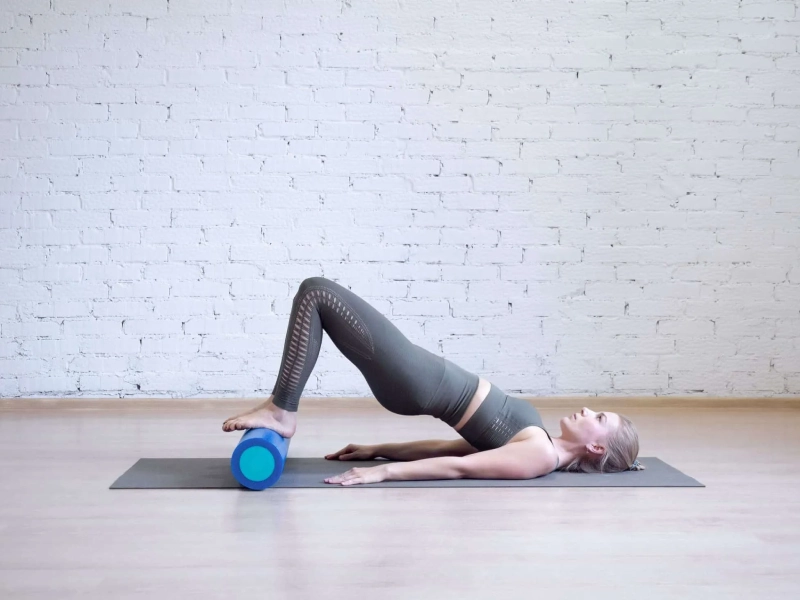
Foam rollers offer numerous significant benefits for those who exercise.
4. Relieves Stress
This self massage method gently releases tightness throughout the body, helping you relax and reduce stress.
How to Use a Foam Roller Effectively in Pilates
Foam rollers are commonly used in Pilates, Gym, and Yoga sessions. For the best results during Pilates workouts, follow these guidelines:
- Identify the target muscle group: Use only your body weight to apply pressure.
- Adjust the pressure: Place half of your body weight on the roller and use your hands to guide movement.
- Pause at tight spots: Hold for several seconds when the roller reaches areas of tension to increase blood flow.
- Massage duration: Spend 30-40 seconds per muscle group and repeat 12-15 times.
- Control your breathing: Take deep breaths to deliver oxygen to the muscles and avoid neck or spine strain.
- Pre and post workout use: Allocate 10 minutes before and after training for best results.
Following these steps will help you maximize the benefits of using a foam roller in Pilates.
Pilates Exercises Using a Foam Roller
Foam rollers not only support muscle release but also add new challenges to traditional Pilates exercises. They enhance core control, flexibility, and balance through therapeutic and functional movements.
Scissors on Roller
Target: Stretch hamstrings, activate transverse abdominis, and stabilize the pelvis.
- Lie on your back with the roller aligned along the spine from tailbone to head.
- Bend your knees at 90 degrees and lift both legs to form a right angle.
- Extend one leg toward the ceiling while lowering the other, alternating like scissors.
- Keep the torso stable on the roller.
Note: Inhale when switching legs; exhale when pulling each leg back. Avoid arching the lower back.
Leg Circles with Foam Roller
Target: Improve hip mobility, strengthen the core, and activate oblique muscles.
- Lie on your back; place one foot on the roller and raise the other leg perpendicular to the floor. Draw large circles in the air with the lifted leg.
- Switch direction after five circles.
- Advanced option: Place the roller along the spine to increase balance difficulty.
Note: Keep the pelvis stable your core should guide the movement.
Mermaid Stretch on Roller
Target: Stretch intercostal muscles, side body, open chest, and expand lung capacity.
- Sit sideways in Mermaid position with legs crossed.
- Place one hand on the roller while the other reaches overhead.
- Lean toward the roller to feel a full side body stretch.
- Hold for three deep breaths before returning.
Ideal for individuals with tight chest or prolonged sitting.
Grasshopper Roll
Target: Strengthen lower back, glutes, and hamstrings.
- Lie face down and place the roller under the thighs.
- Bend your knees and bring the soles of your feet together.
- Exhale as you lift your knees off the floor, activating the glutes.
- Inhale while lowering.
- Variation: Lift your chest along with your legs for a full posterior chain workout.
Note: Avoid compressing the lower spine; focus on glute activation.
Leg Pull Front on Roller
Target: Strengthen core and shoulders; improve overall stability.
- Start in a plank position with hands on the roller.
- Engage your core and lift one leg.
- Hold for three seconds, then switch legs.
Common Mistakes When Using a Foam Roller
Using a foam roller incorrectly may cause discomfort or reduce effectiveness. Avoid these mistakes:

Mistakes to avoid when exercising with a foam roller.
Rolling on the Wrong Area
Applying direct pressure to injured or inflamed areas may worsen pain. Instead, roll above and below the affected region.
Using the Roller to Reduce Pain Directly
Direct pressure on painful spots increases sensitivity. Adjust the roller’s position to reduce excessive pressure.
Rolling on the Lower Back
Rolling directly on the lower back can compress the lumbar spine and cause muscle spasms. Stop at rib height and focus on the upper back.
Rolling With Only One Direction
Moving in a single up and down direction minimizes effectiveness. Incorporate multi directional rolling to enhance blood flow and release restricted muscle tissues.
Using a foam roller correctly is crucial for achieving the best results. Avoid these mistakes to relax your muscles effectively and support recovery.
In Pilates, Yoga, Gym, and other fitness practices, the foam roller is more than just an accessory it plays a vital role in boosting workout quality and overall effectiveness. With its ability to reduce muscle tightness, enhance flexibility, and improve balance, the foam roller has proven to be a highly beneficial training tool. Apply the techniques and tips shared in this article to maximize the advantages of this Pilates accessory.

